Are you looking for some B2B website design inspiration? Then this blog is for you.
For B2B organizations, a perfectly designed website is crucial. It is vital to ensure that your target audience gets hooked on the website’s design and content.
To help you design the best website, we curated a list of the 25 best B2B website design examples.
Check them out! 👇

Before you start designing your website from scratch, here are a few things you need to consider and create.
Here are the best B2B websites that have been successful in catching eyeballs and converting visitors, along with how they could do it.
HubSpot ranks #1 on our list for the right reasons. The CRM platform has a contemporary website design with a clear value proposition to engage visitors immediately. The highlights of HubSpot's website are:
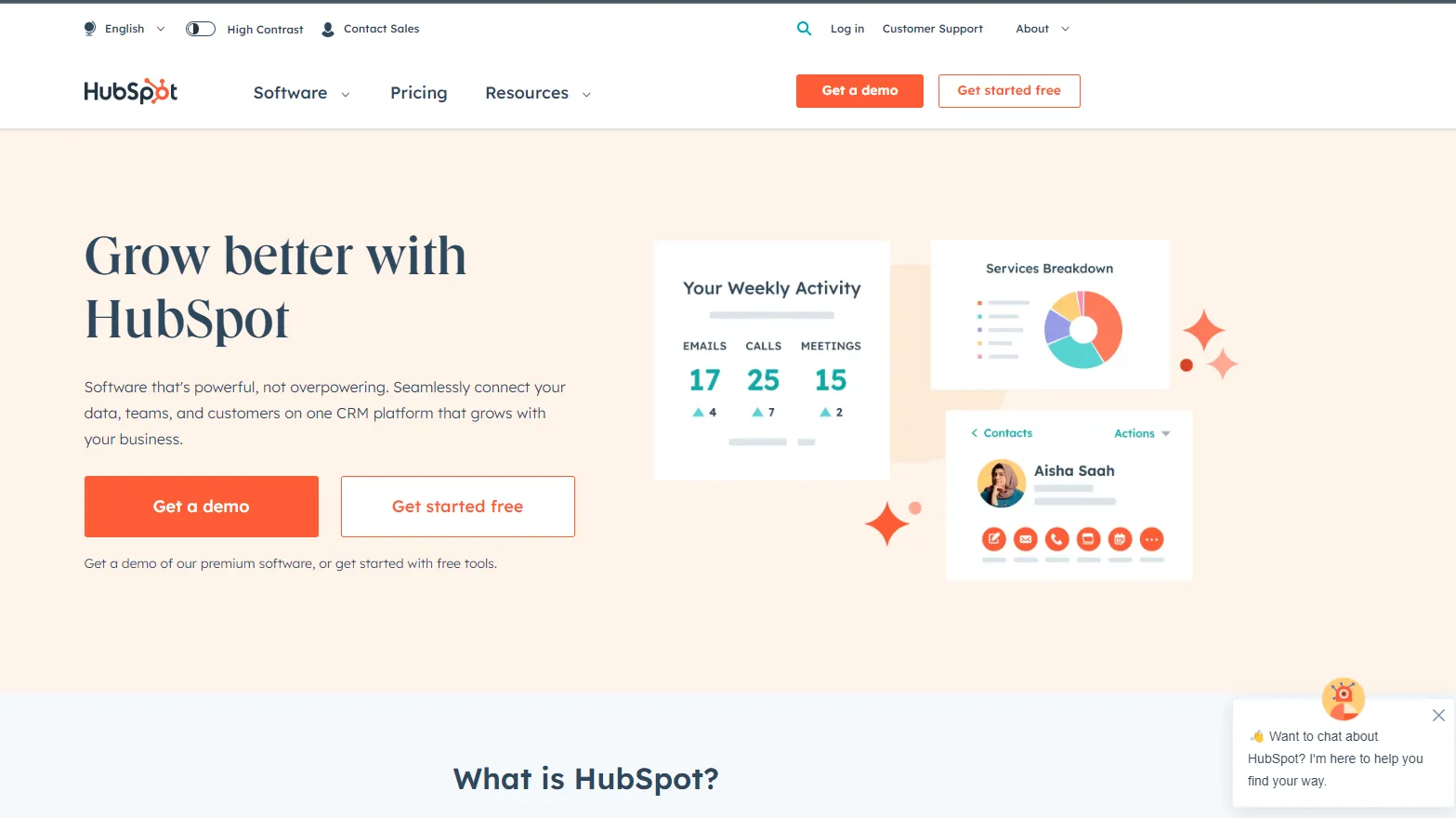
Prioritize simplicity and clarity in design while clearly communicating the value your business offers.
Shopify is a leading e-commerce platform that enables businesses to create and manage online stores. Their website distinguishes itself with a clean and professional design that focuses on simplicity, ease of use, and the ability to scale. It effectively demonstrates how Shopify empowers businesses of all sizes to succeed in e-commerce.
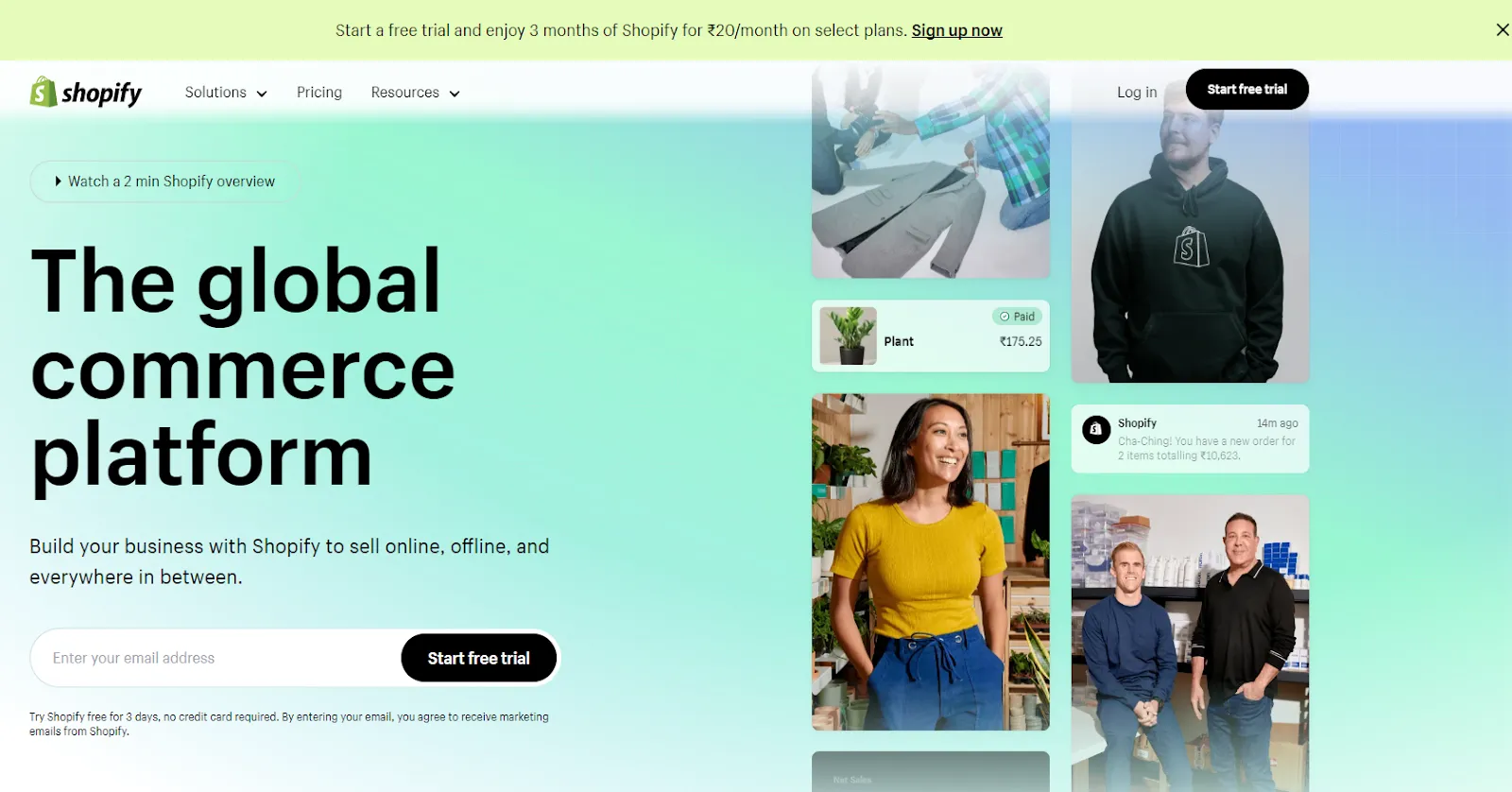
Shopify utilizes a clean design, concise copy, and compelling visuals to demonstrate the value of its solution. The key takeaway with Shopify is to highlight your offerings in a visually appealing and straightforward manner.
Reputation Squad, as the name suggests, monitors the reputation of businesses online. The website's home page has everything; what they do, their case studies, and their team contact. One thing that makes it unique is that you must scroll the page from right to left rather than scroll to the bottom.
The company managed to have a very simple and one-of-a-kind website that makes visitors stick to the website and keeps them interested.
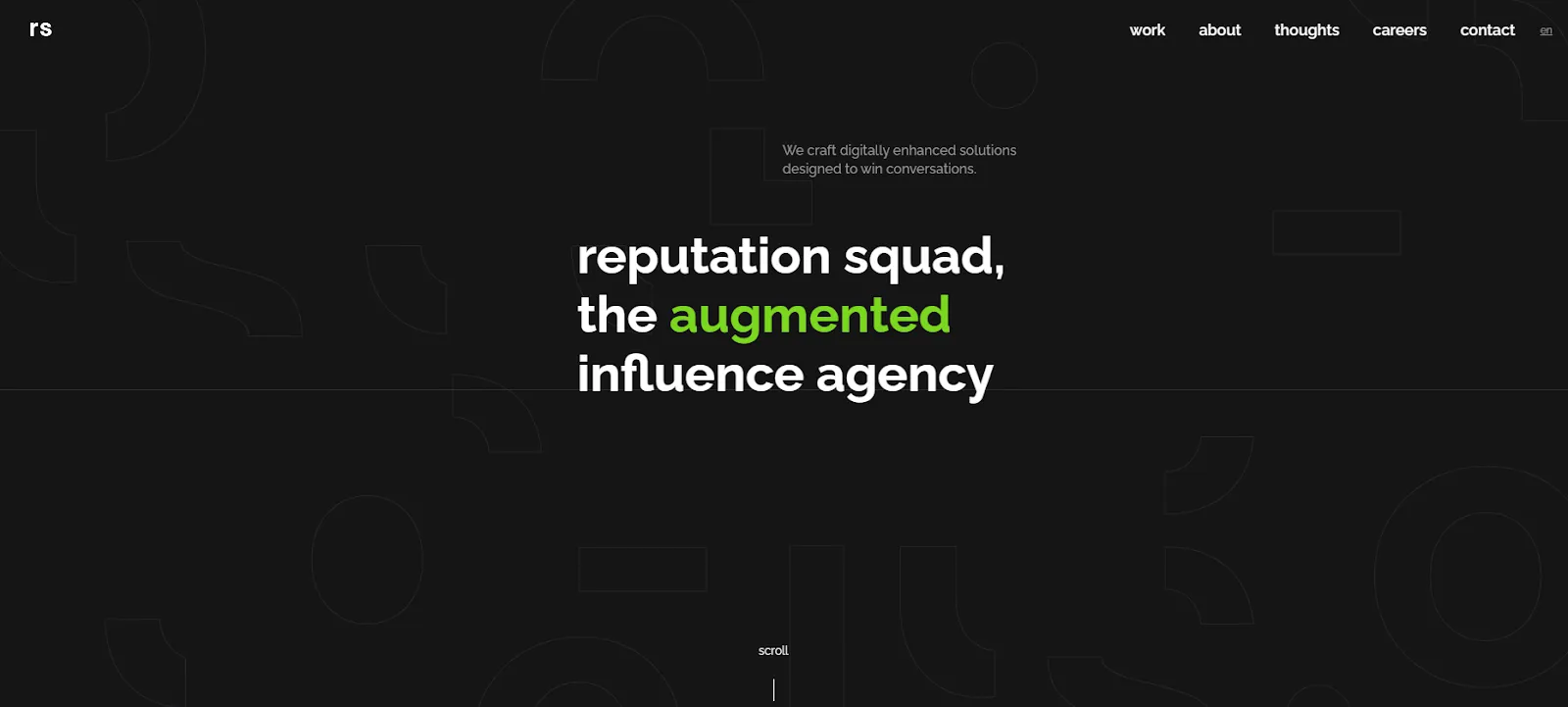
Reputation Squad doesn't have a salesy website. Its website simply depicts what they have done, how reputation can affect the business, and the case studies. It is simple, unique, and interesting.
Asana's website stands out for its simplicity and effective copy. The collaboration tool uses straightforward and engaging copy to communicate what it does and why businesses should opt for it.
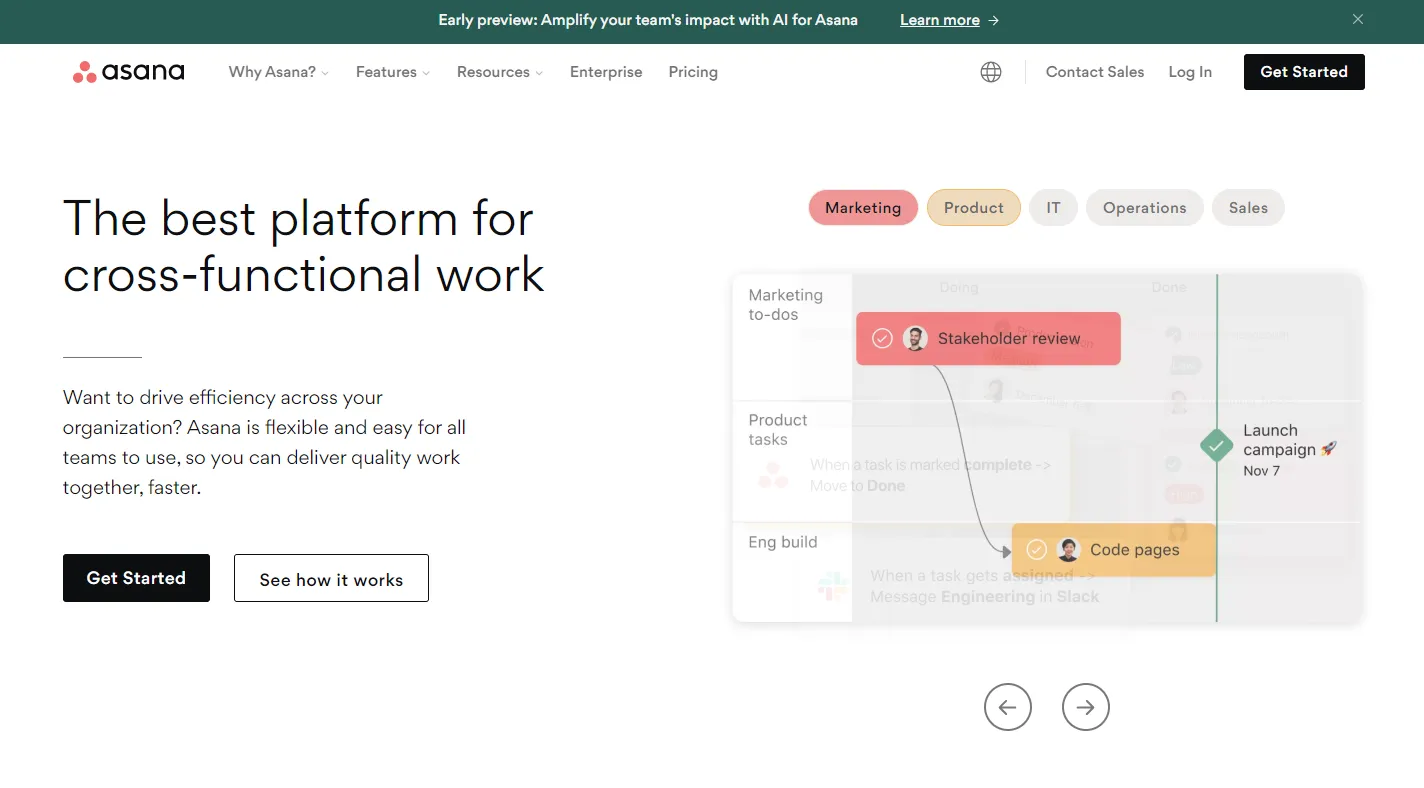
One thing that stands out on the Asana website is its CTAs. The animated CTAs on the menu tab as well as when a user scrolls is very responsive and intuitive.
Stryve's website comes with a unique color palette and font style. The brand consistently follows the format on the website. The color palette depicts how the brand is quirky and easier to work with. Their unique font style is professional and stands out.

Stryve is consistent with their brand tonality; be it the style, font, casing – and that’s what makes it memorable for anyone who visits it. Due to these reasons, it is very easy to recognize the brand.
55% of the traffic on a website comes from mobiles. Also, Google uses mobile-first indexing, making mobile-responsive websites more important than ever. Here you can see two images of the IBM website, one from a desktop and the other from a mobile browser. The information, images, and navigation on two devices are aligned with the size of the respective screens.
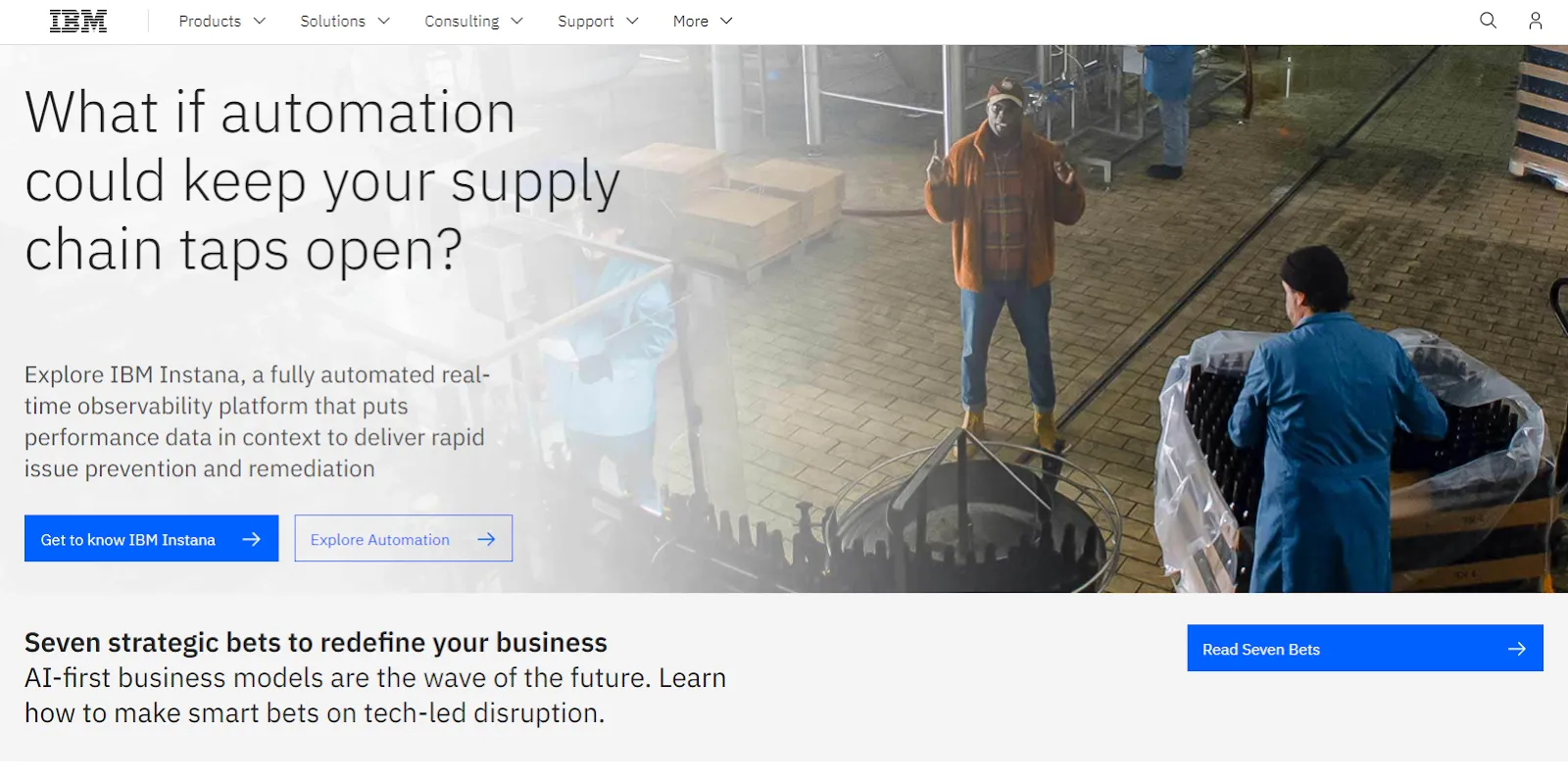

Mobile responsive websites are the need of the hour. So, ensure optimizing them for touch screens, design a user-friendly layout, and set responsive backgrounds to make the website function well across different devices.
Miro's website is on the list because of its CTAs. The website CTAs are prominent, rightly positioned, and action-oriented. The language on their signup button is simple: Sign up for free.
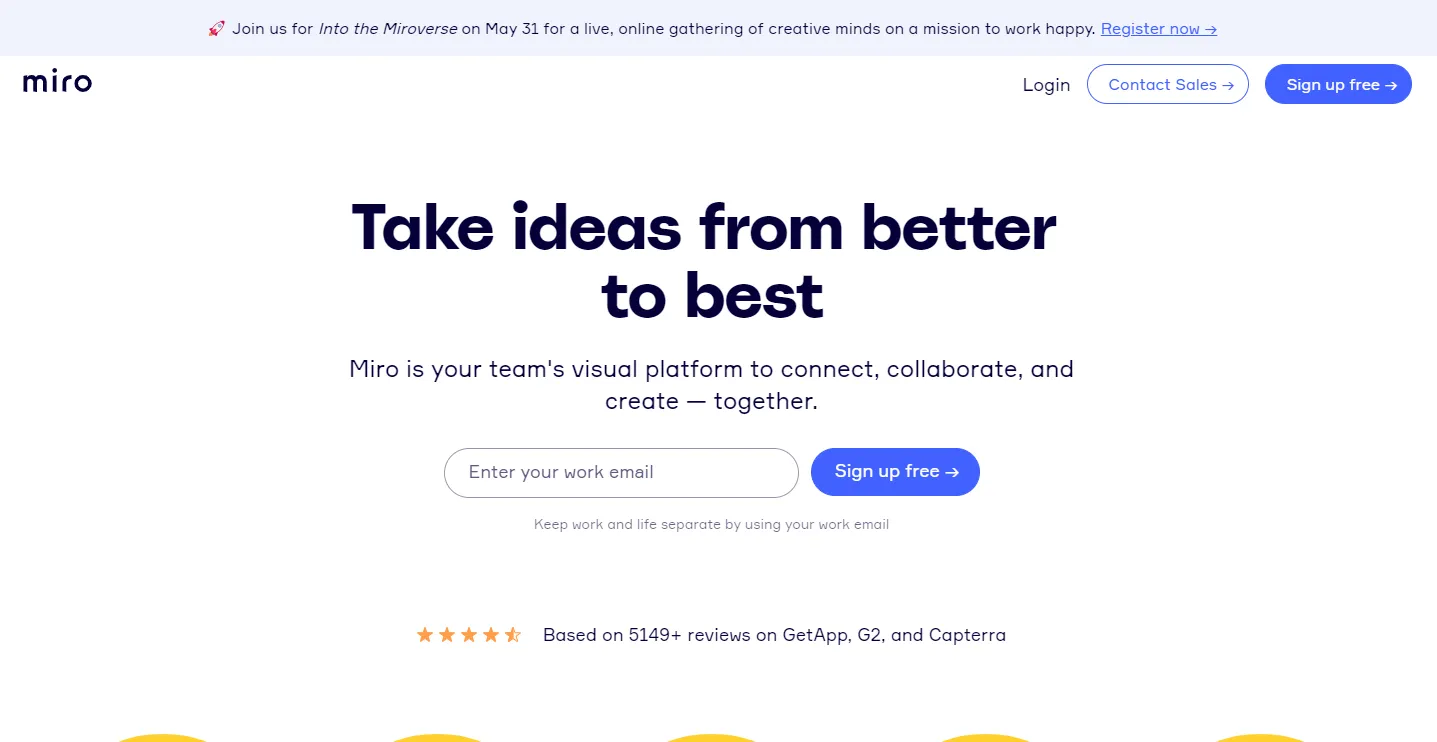
Use simpler words in the CTAs and ensure they stand out from the rest of the content. You can always do A/B testing to understand which color or text works better.
DoneDone's website stands out for its visuals. The extensive use of graphics along with straightforward copy on their homepage paints a clear picture of what the platform offers and how it can help you.
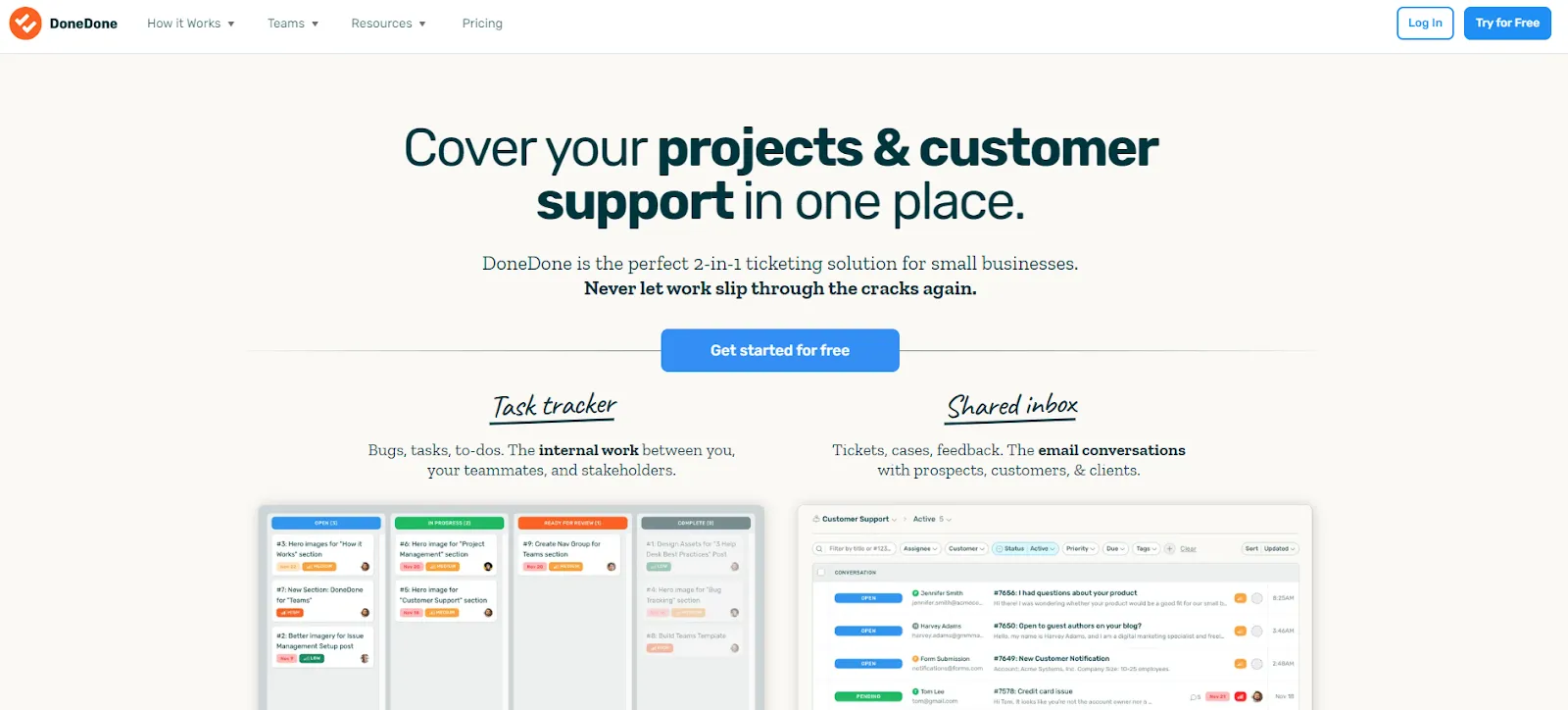
Use visuals like illustrations, GIFs, images, and videos that will attract the audience and make them understand your business.
Voluum has a simple and straightforward website. The platform speaks about its services in a one-liner. Further, you can also find its different features explained in crisp and concise way.
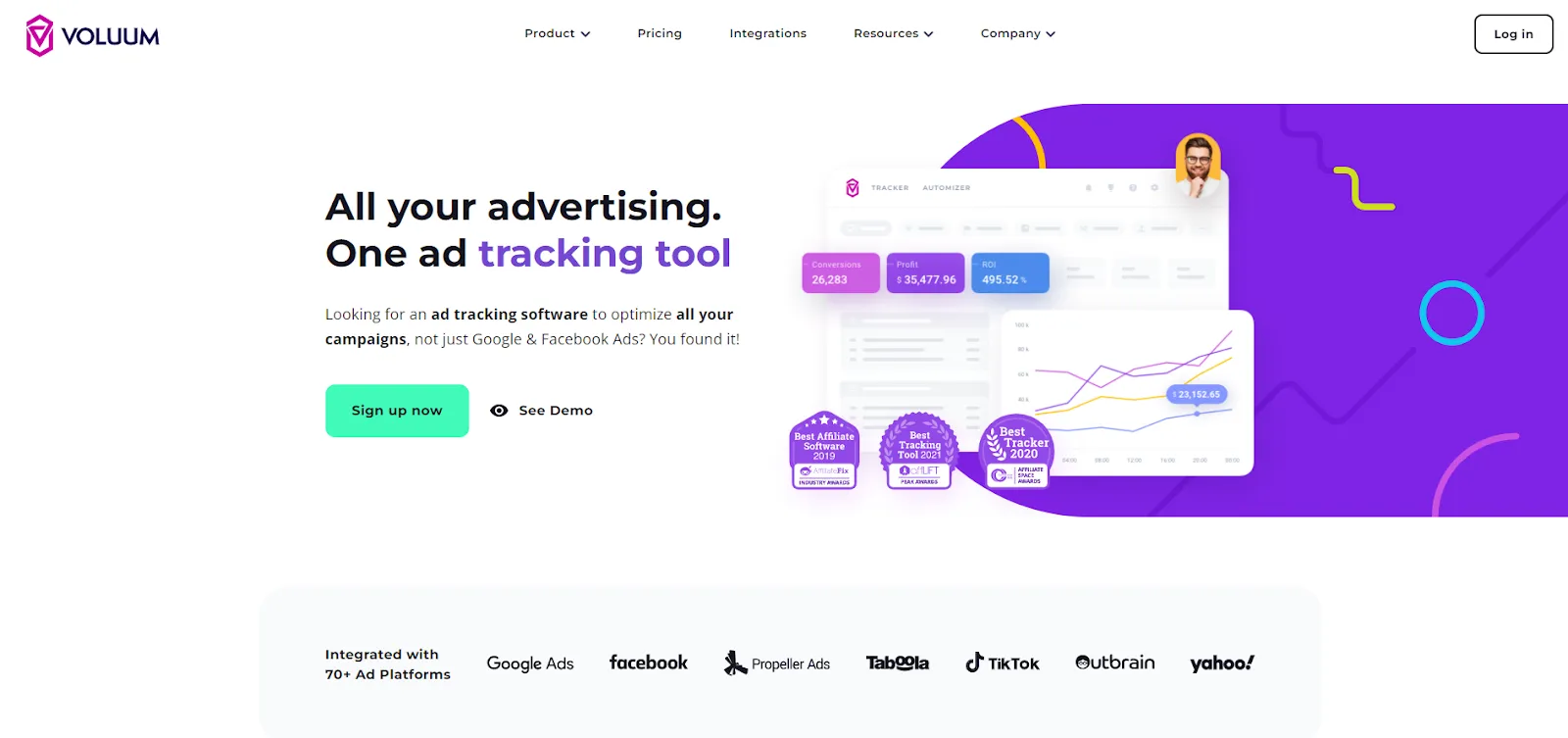
You first-time visitors should feel something to keep you on the top of their mind, right? So, stand out in a way that they know what you offer in one-go. Make your one-liner catchy and easy-to-understand.
For B2B businesses, social proof makes a huge difference. Intellum focuses on highlighting this. They have used the case studies to show visitors how they have impacted the customers. This customer education platform has a dedicated page for its customer success stories that help visitors understand the product and its use cases better.

Create a solid case study page that depicts your previous work to establish trust with your target audience. Here are few pointers to keep in mind:
Client testimonials speak volumes about your product. So, it is important to include success stories to build credibility. Hunch’s website highlights a client testimonial after every feature, saying how the specific feature has helped them. Each testimonial is authenticated with an image, the person's name, designation, and company.
All the testimonials are collected from top-level decision-makers.

If you have a good client list who is happy about your product or service, it is important to reach out to them and ask for a testimonial. Ensure that you publish these testimonials on the home page, as it boosts the authenticity of your brand right from the start.
Brandtailers has a unique, thoughtful, and accessible website design. The website is built considering people with special reading requirements, like ADHD, seizures, or vision impairments.
‘Special’ visitors can just switch their respective profiles, making the website easy to understand. One can select the profile by clicking on the icon on the bottom right side of the home page.
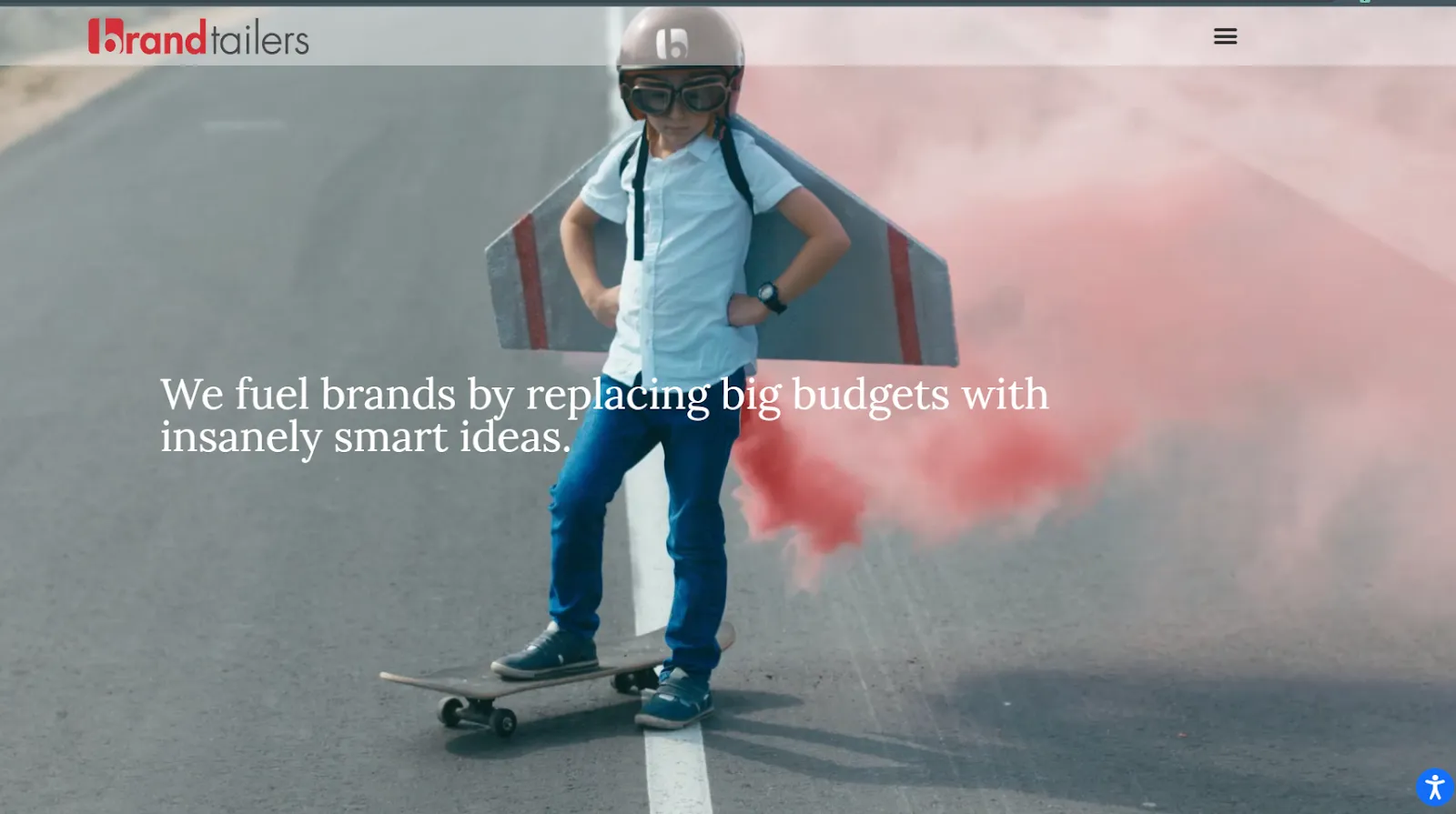
Making your website mobile-responsive is one thing, but leveraging technology to make it user-friendly for different types of people shows how empathetic your brand is.
Minimalistic websites are on the rise lately. Acme’s website is clean, with minimal content clearly stating its offerings and images. This helps the website load quickly.
The home page has one image with different sections, and clicking on a specific section shows the detailed content. Overall, the website design is simple and easy to understand.

Minimalistic B2B website design is not that common, but it makes you stand out and also gives clear information to the visitor without a lot of jargon or images.
Adobe CXM is a one-page website. The site is interactive, easy-to-navigate and engaging for the users. There are five navigation buttons to the left that guide users through each section of the page.
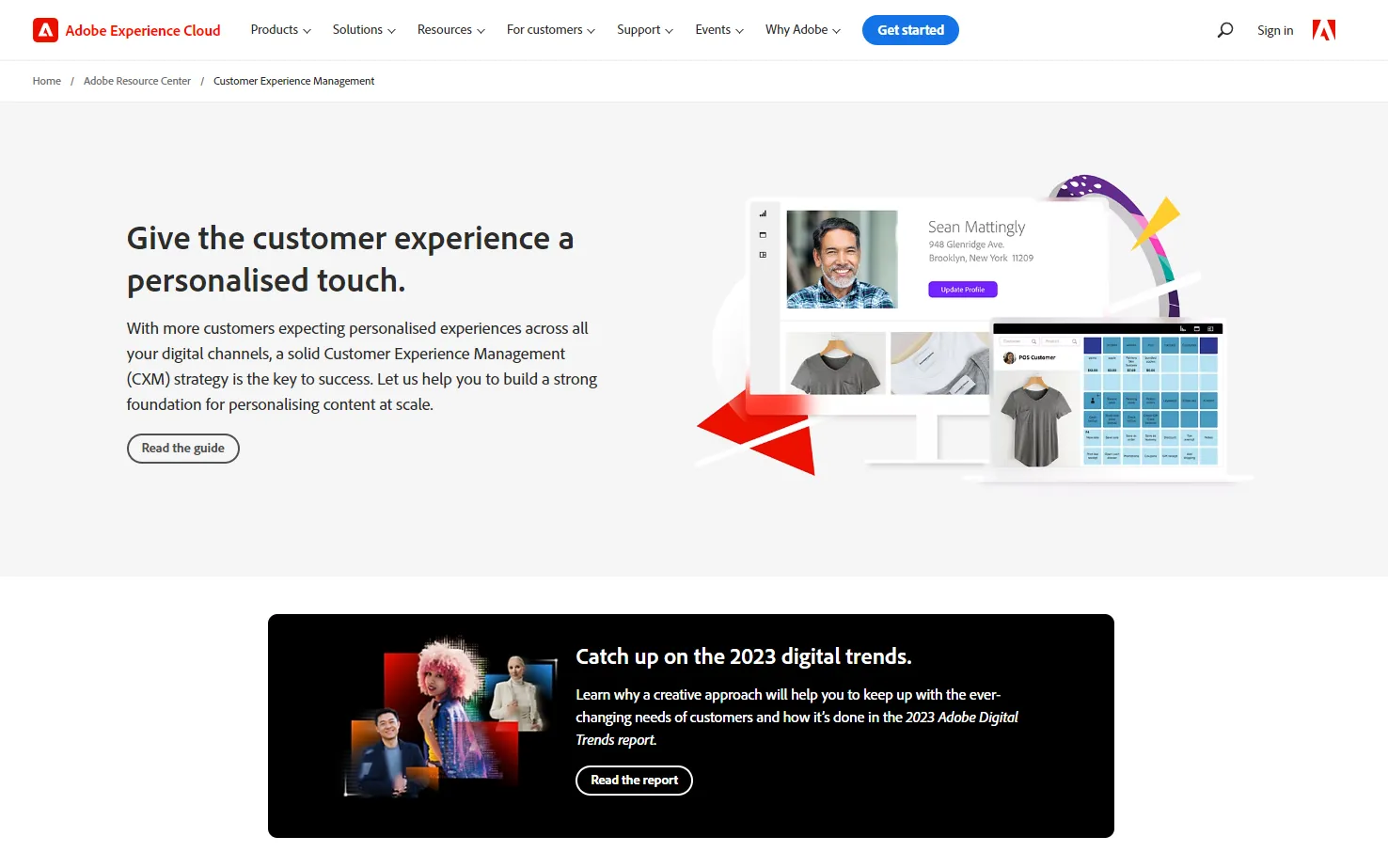
A concise, information-packed copy that clearly conveys what the brand offers is key to engaging users. Additionally, a sample layout and a few relevant graphics are sufficient to make the website intriguing.
Pixelgrade is another simple yet interesting website design example. Their value proposition communicated in a one-liner and then a CTA taking you to their theme store directly. The website background is purple, which is unique.

Having clear and concise content on your website is a huge plus as it won't overwhelm visitors and conveys what the brand does in a simple way.
HootSuite has a very simple homepage with two lines of copy talking about how their tool can have positive effects on your business. They have shared their value proposition and used statistics to back it up.

HootSuite website uses creative copies and statistics to talk about their product. The team have also used different colors to make their copy stand out.
Mailchimp's website focuses on user experience and simplicity. It has an easy-to-navigate interface and concise messaging, highlighting its powerful email marketing features, audience management, and data-driven insights.
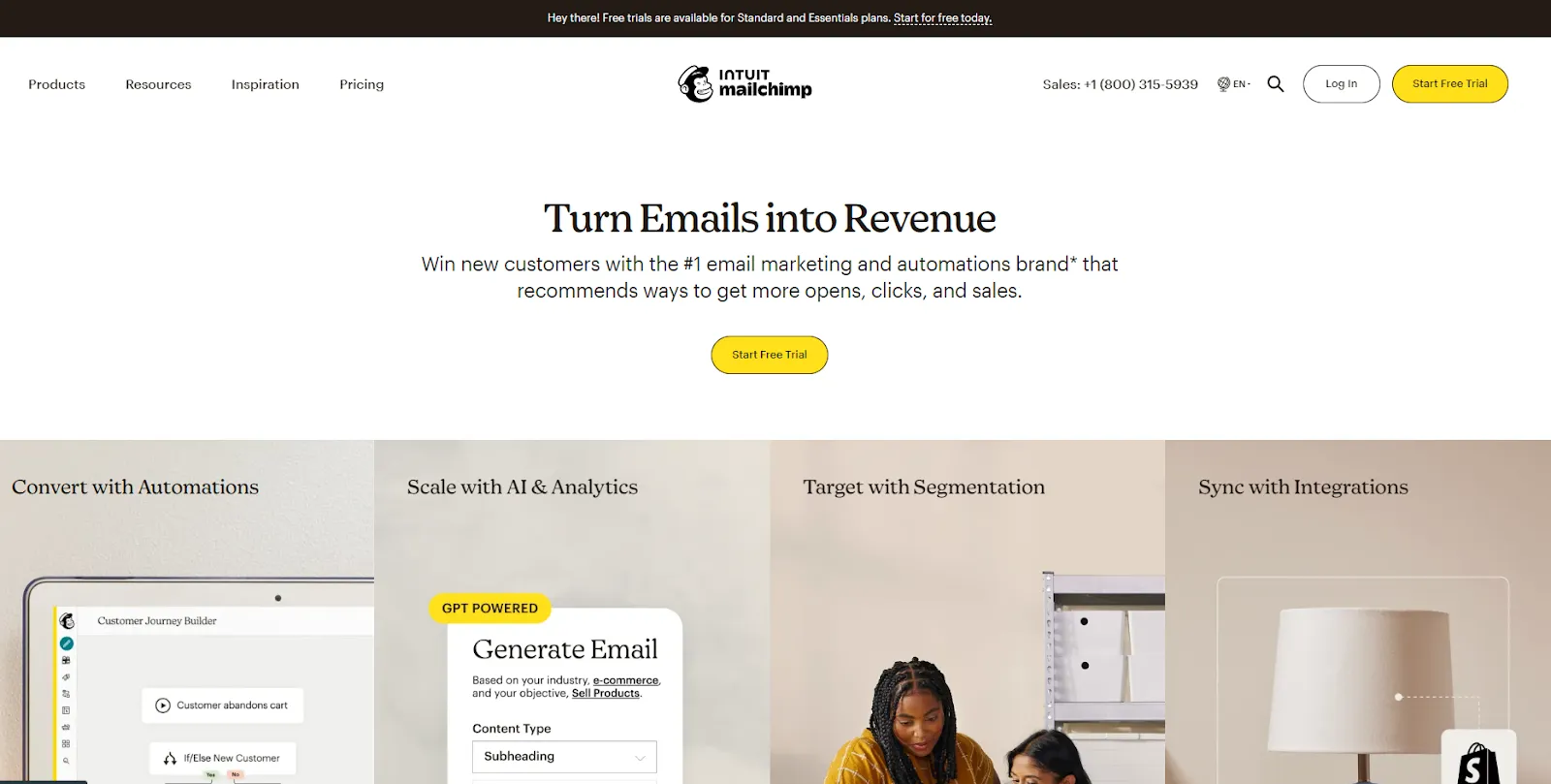
Just like Mailchimp, it is always important to ensure that your website has a great UI and UX that attracts the visitors and simplifies the navigation for them.
Yapstone offers vacation rental payment processing service. Their headline copy talks about how their expertise can help you with the payment system. The website incorporates interesting scenery images on the homepage and has a unique color in the background giving an aesthetic vibe.
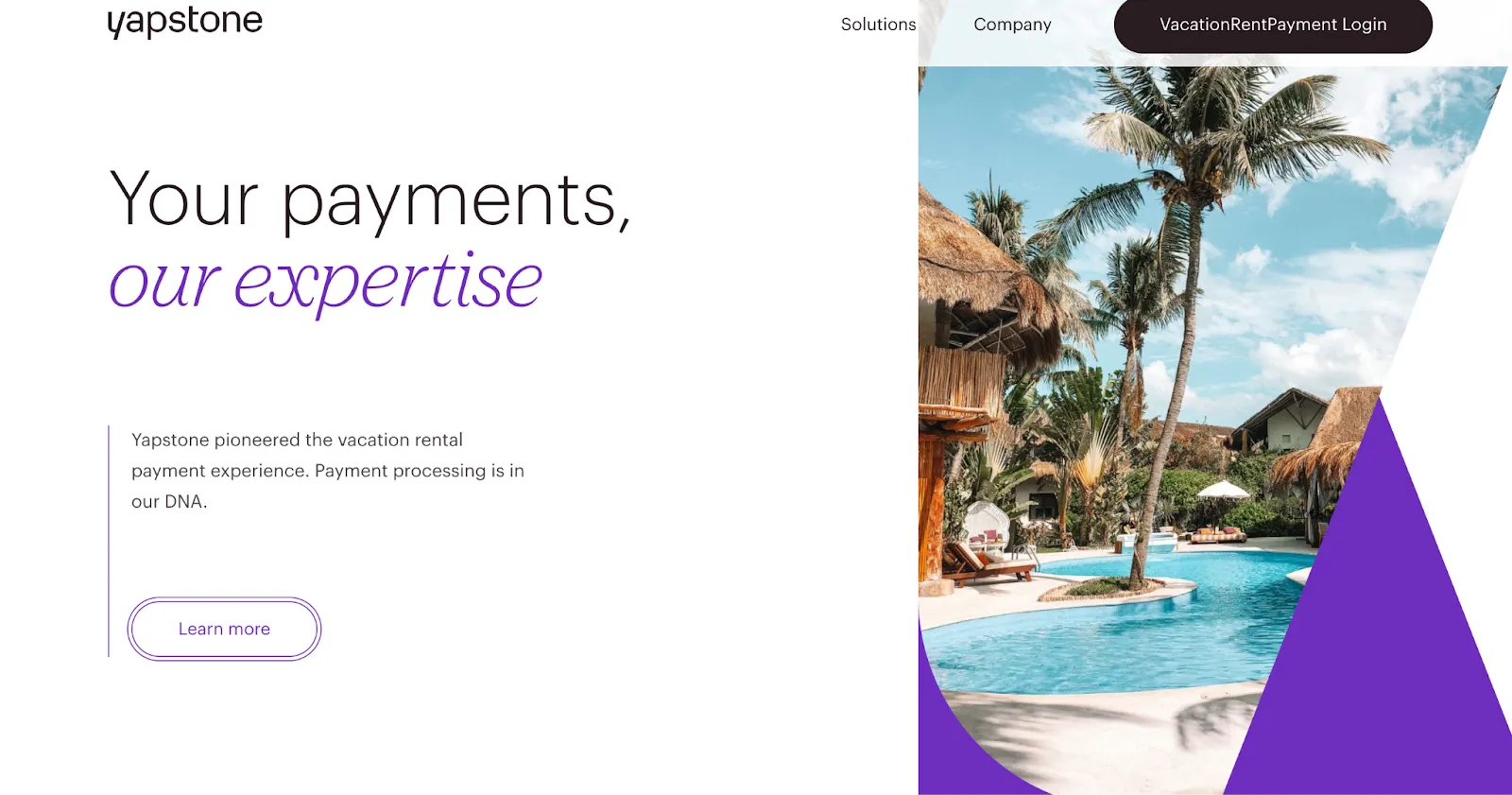
Use effective one-liners to convey about your offerings. Maintaining the same color palette on all of your website pages can enhance branding.
Zendesk has done an amazing job by focusing their design on “providing great customer support” from the start itself. You will also find statistics on one side of the website. Statistics always have a huge impact on the readers’ minds and Zendesk has done it right. They have also used different colors, like beige for the background and purple for highlighting the text.
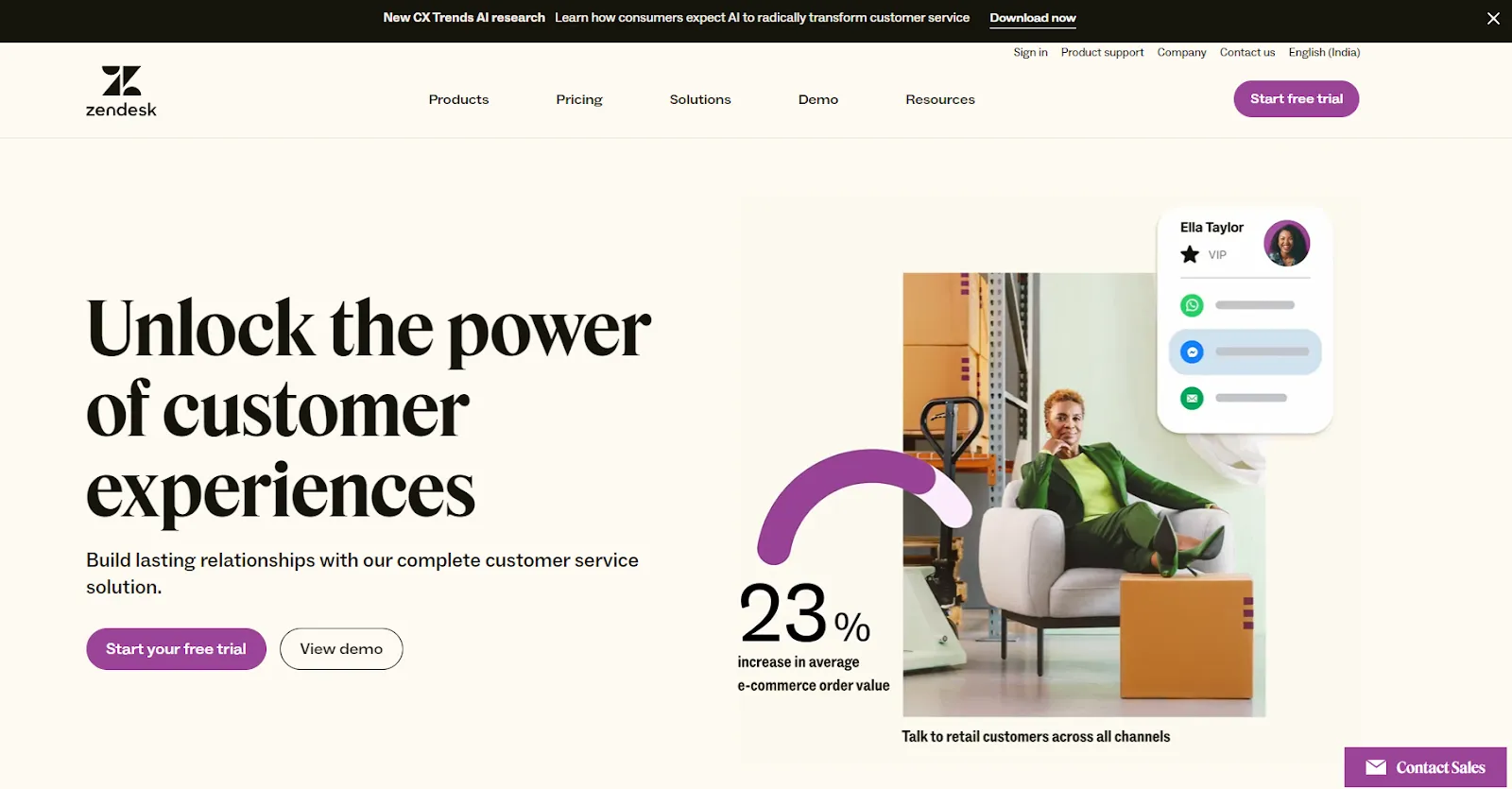
Just like Zendesk, you can always opt for talking about the value proposition of your company at the start so that any visitor can understand what you are offering immediately.
Pulse220 leverages the card design to discuss about its brand. The website’s homepage has a header section followed by cards and testimonials. The visitor who wants to know about their services can click on the respective card for further details.

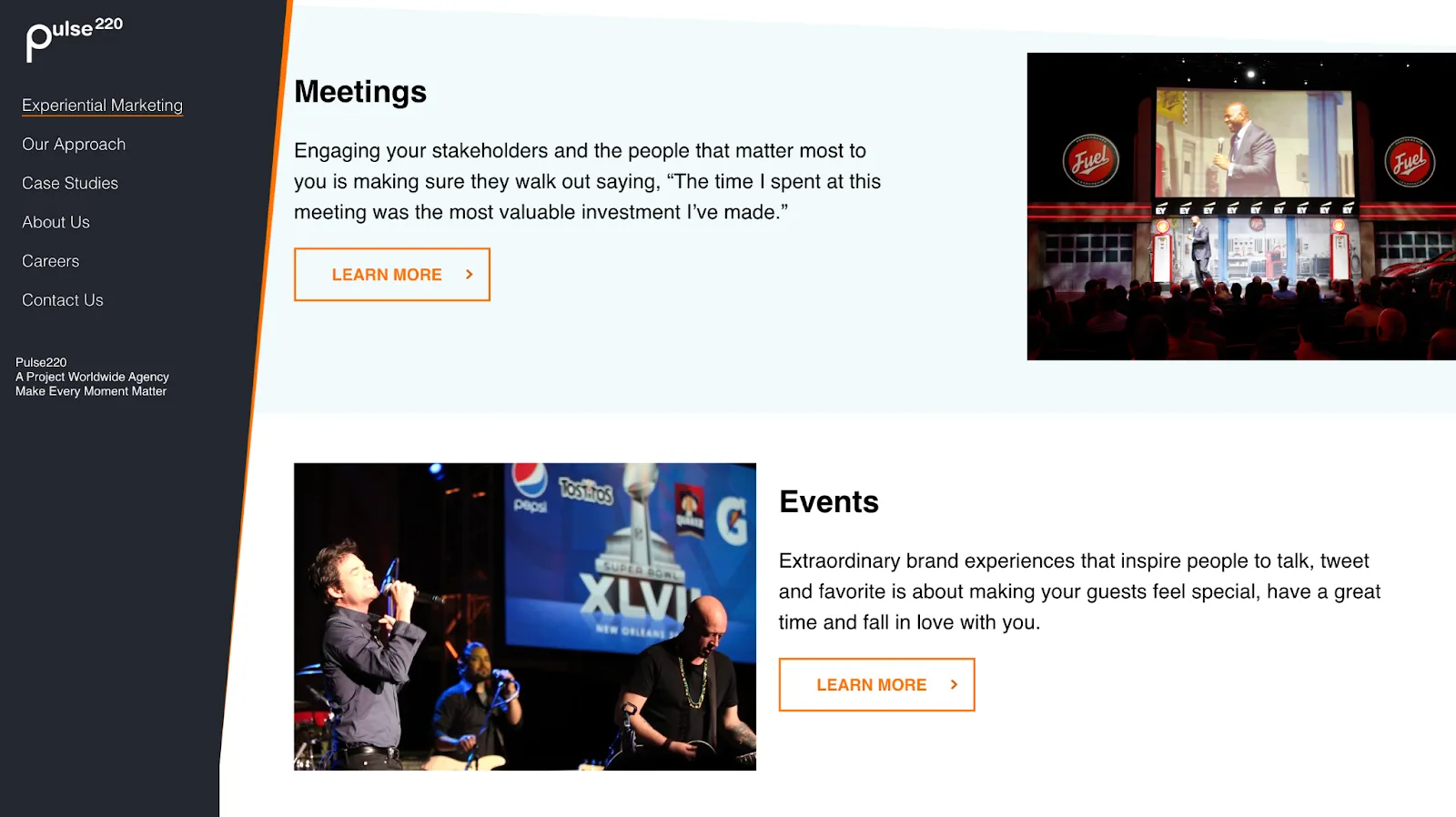
Pulse220 employs a different layout on their website, and this makes them standout. You can always opt for various types of layouts and colors that will give uniqueness for your website.
WalkMe's use of a simple UI, highlighting product screenshots and the website copy, is its main attraction. The sufficient use of white space allows users to focus on the main content and images. Also, the dark blue CTA buttons are prominent.
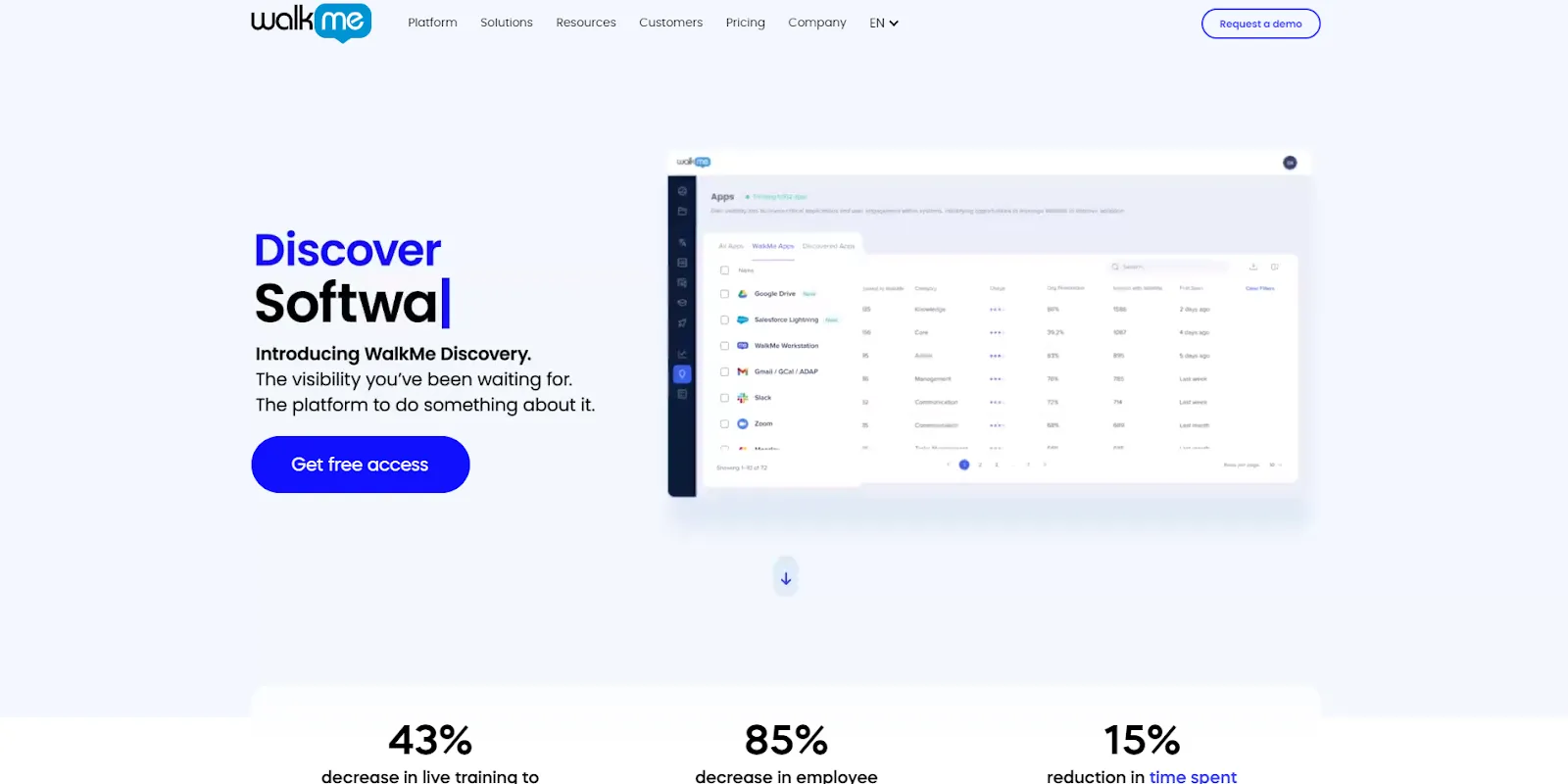
Simple website design, copy and highlighted CTAs are enough to keep the audience engaged and WalkMe is on point with all three of these.
Orbital Sidekick uses advanced space-based hyperspectral infrastructure and spectral intelligence to monitor space and gather information necessary for corporates and governments. Their value proposition is very unique, and that is the reason why their website makes it clear in the first header itself.
They create FOMO with the heading and talk about what they offer in the later part.
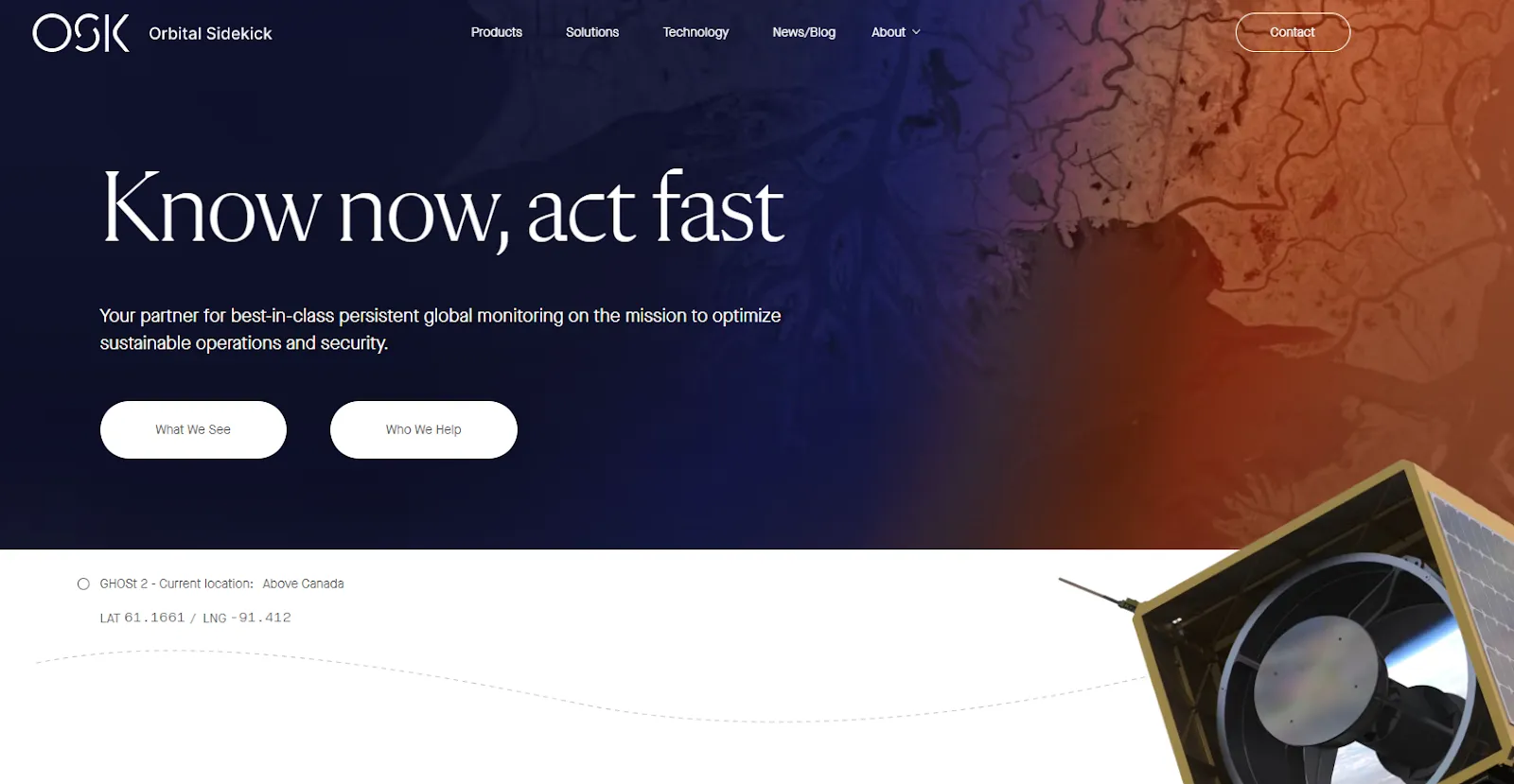
Orbital Sidekick simplifies its brand proposition with a few lines of content. They have rightly positioned CTAs and relevant images supporting their work all over the website.
Square is a payment platform with a simple, easy-to-understand website with an amazing user interface and navigation facilities. The ample use of white space, cards on its different platforms, images, flow charts, and responsive design make Square stand out.
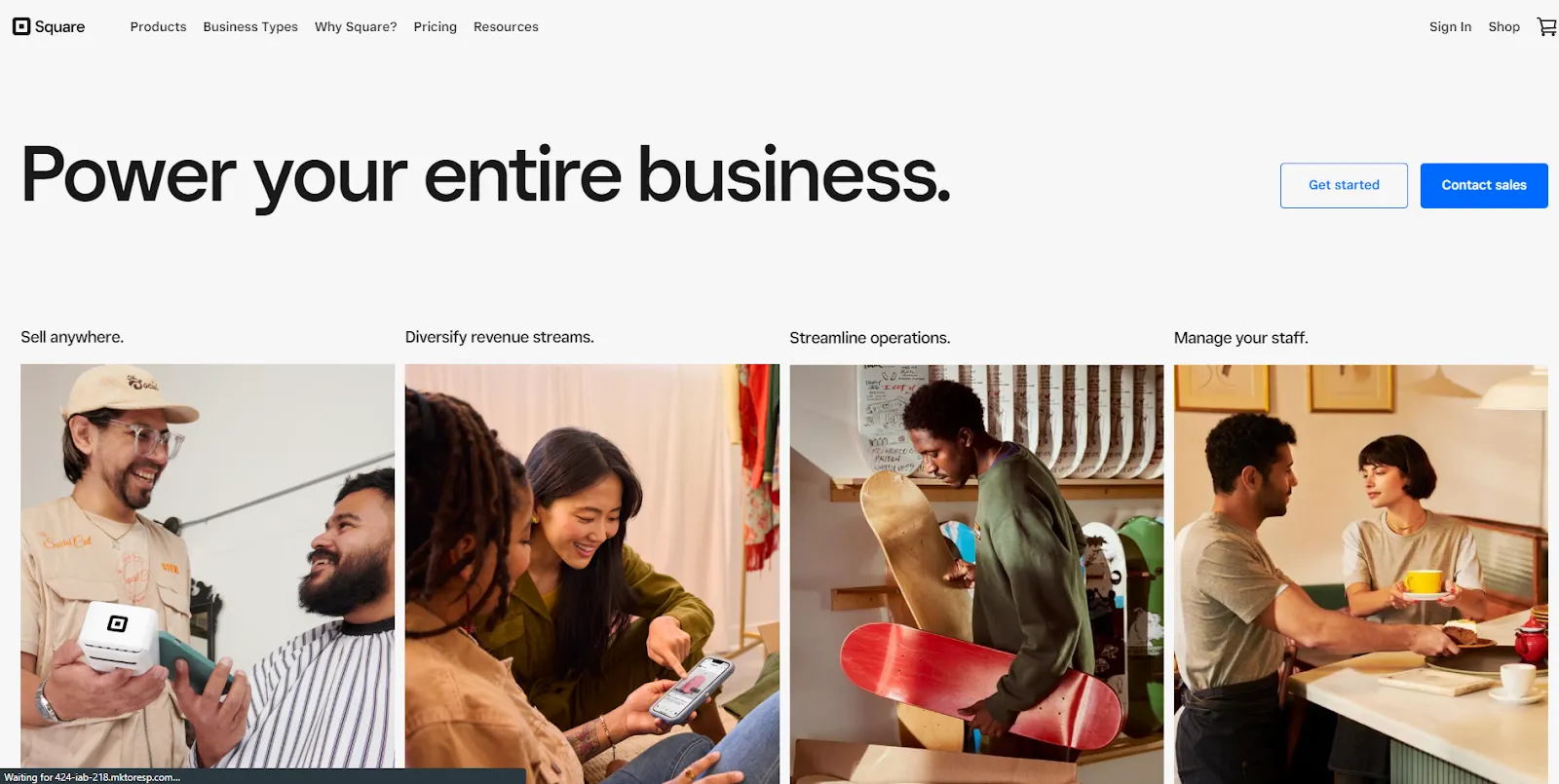
Square has a “Get Started” tab right on the start of the homepage and you can enter all of your relevant details in it to get a personalized experience on the website, which makes it very unique.
Netbase Quid is another interesting website that plays very well with colors. The company offers multiple products and all of them are displayed on different cards and colors. The website design is very simple, and visitors would understand the company's value proposition with ease.

You can use colors to differentiate between different product offerings in your company. Apart from that, leveraging the whitespace effectively can make a huge difference.
Weblounge has opted for a classy and minimalist design on their website. The beige background, brown text and font, everything stands out from their competitors. Weblounge has kept their copy simple as well. Visitors will learn what Weblounge offers in the first sentence and the website also has perfectly placed CTAs.
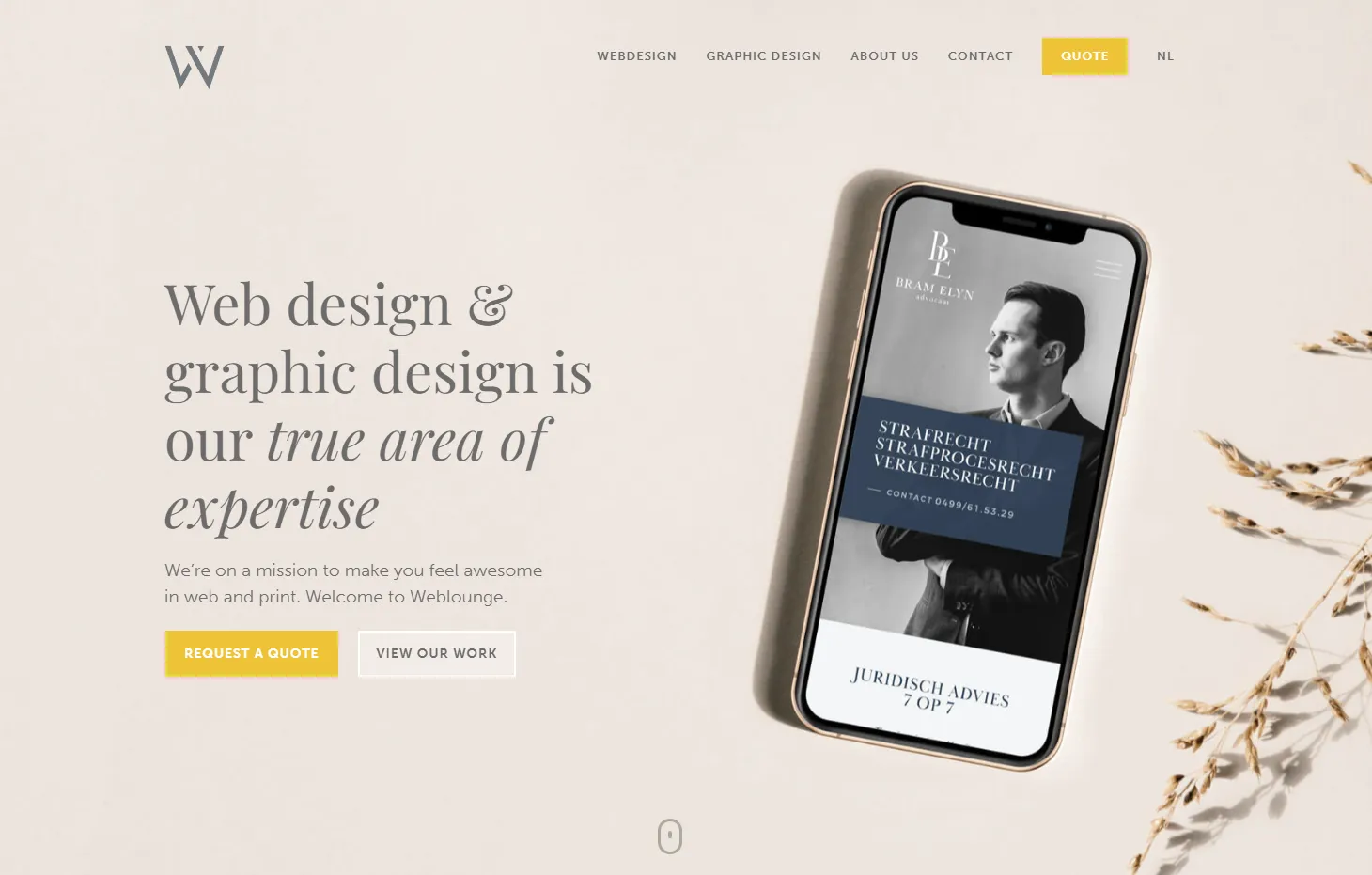
Weblounge is all about designing, and their website depicts exactly that. You can see how they have used different colors and layouts to give you that perfect look and user experience.
Here are a few tips to build high-converting B2B websites.

The attention span of users on the internet is decreasing with every passing day. So, catching their interest in the first few microseconds when they visit your website is important. For this, you must have a responsive and well-designed website. Here are a few aspects to keep in mind:
Most B2B websites talk about the brand, its offerings, and various other aspects that are related to the company rather than talking about the customers. When a business does this, it is a huge letdown for the customers.
Every business has its own set of target customers who would identify themselves with any of your products or services. You need to leverage this identification and allow customers to talk about themselves rather than just going on and on about your brand. Apart from that, you should also talk about how they look at you as a vendor.
Yes, you offer a great product or service, but what is in it for your customers? How would they benefit from the product? How do you deliver their desired outcomes? These are some of the questions that you need to answer.
A visitor is coming onto your website seeking something, and it is up to you to offer it without hassle. Curate your website and content so that it answers customers questions rather than talking about your offerings. For this, you must use customers' language, understand their requirements, and design your website around them.
Navigation has the capacity to make or break your website and there is no exaggeration in that:

Setting up a B2B website with perfect design and user interface maybe timetaking. But you don't have to worry about this, as TripleDart is here for you. TripleDart has a specialized team of designers and developers who can design a website that aligns with your brand requirements and helps you stand out among the competitors.
You might want your B2B website to be quirky yet professional, or aspire a minimalistic website that stands out. No matter what kind of website you need, TripleDart is here to design it for you. Book an intro call with the team to see how TripleDart can materialize your ideas into a scroll-stopping website!
B2B web design refers to the process of creating and designing websites specifically tailored for B2B interactions. The goal of B2B web design is to create a professional, trustworthy, and user-friendly online platform that supports B2B transactions and nurtures business relationships.
Have a clear idea of target audience, maintain clarity about your value proposition, have a proper website layout, compelling content without a lot of jargon, images, animations, and other types of media to keep the visitor hooked.
Simple design, easy-to-understand content, images, better resolution, faster loading speed are some of the important aspects of a B2B website.
Some interesting color combinations for the website design are: navy blue and white, black and white, or gray and white, blue and green, beige, cream, taupe, soft grays, red and yellow, orange and blue, or bright greens.
The best website designs that so many brands follow are corporate and professional, minimalistic, modern and innovative.
Join 70+ successful B2B SaaS companies on the path to achieving T2D3 with our SaaS marketing services.

































